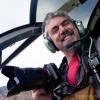"Sweet Spot" for ISO best sensor performance
-
Recently Browsing 0 members
- No registered users viewing this page.
-
Similar Content
-
- 2 replies
- 456 views
-
- 2 replies
- 131 views
-
- 5 replies
- 3,522 views
-
- 18 replies
- 1,927 views
-
- 8 replies
- 874 views
-




Recommended Posts
Join the conversation
You can post now and register later. If you have an account, sign in now to post with your account.
Note: Your post will require moderator approval before it will be visible.